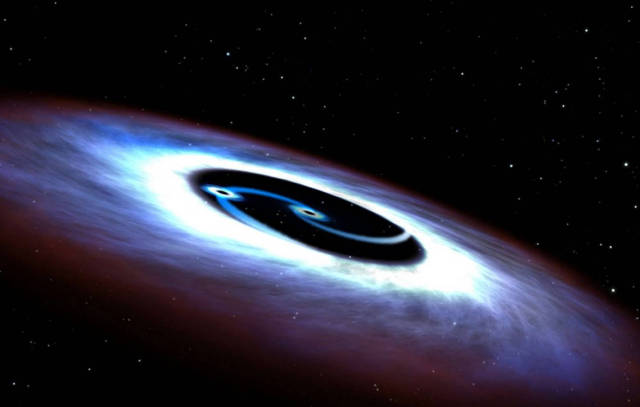By using NASA’s Hubble Space Telescope, astronomers have found that the nearest galaxy to Earth (Mrk 231) hosting a quasar, is powered by two central black holes furiously whirling about each other.
Image credit NASA, ESA, and G. Bacon (STScI)
The finding suggests that quasars — the brilliant cores of active galaxies — may commonly host two central supermassive black holes, like a pair of whirling skaters, that fall into orbit about one another as a result of the merger between two galaxies. The black-hole duo generates tremendous amounts of energy that makes the core of the host galaxy outshine the glow of the galaxy’s population of billions of stars, which scientists then identify as quasars.
Scientists looked at Hubble archival observations of ultraviolet radiation emitted from the center of Markarian 231 (Mrk 231) galaxy, to discover what they describe as “extreme and surprising properties.”
Youjun Lu of the National Astronomical Observatories of China, Chinese Academy of Sciences, said:
“We are extremely excited about this finding because it not only shows the existence of a close binary black hole in Mrk 231, but also paves a new way to systematically search binary black holes via the nature of their ultraviolet light emission.”
Co-investigator Xinyu Dai of the University of Oklahoma, added:
“The structure of our universe, such as those giant galaxies and clusters of galaxies, grows by merging smaller systems into larger ones, and binary black holes are natural consequences of these mergers of galaxies.”
The central black hole is estimated to be 150 million times the mass of our sun, and the companion weighs in at 4 million solar masses. The dynamic duo completes an orbit around each other every 1.2 years.
The lower-mass black hole is the remnant of a smaller galaxy that merged with Mrk 231. Evidence of a recent merger comes from the host galaxy’s asymmetry, and the long tidal tails of young blue stars.
source hubblesite






Leave A Comment